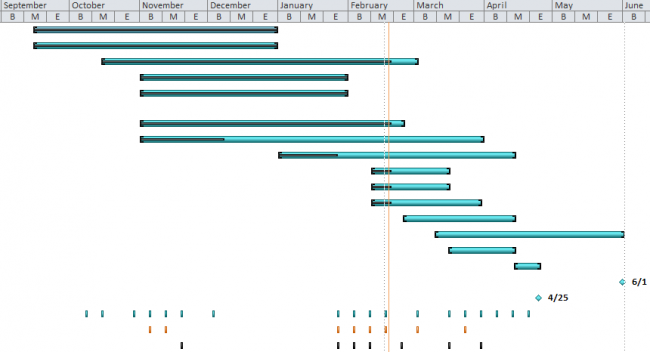Background:
Our team selected a project dealing with stuttering under the advisement of Dr. Tedra Walden of the Vanderbilt Departments of Psychology and Hearing and Speech Sciences and the Vanderbilt Kennedy Center. In this project, we aim (1) to develop a quantitative means of distinguishing between the patterns of stuttering and non-stuttering speech, and (2) to build a research tool to assess biases against stuttering.
As of our last progress report, we were primarily focusing our efforts on designing the test logic of the IAT in the context of Applet design with swing user interface.
Achievements:
Since the last progress report, we have completed a number of major tasks integral to our final design. First, the applet and GUI framework has been established. Second, we were able to functionalize our applet to be usable outside of a webpage. While many features of the applet were testable on their own, previously images and audio files could not be accessed outside of a domain. This is no longer a challenge. Third, we have nearly completed the test logic of the IAT. Our program can cycle between randomized rounds and randomized trials successfully, and all that is left to do is compile the pieces to run from beginning to end. Fourth, we have designed the layout of the statistical components of the program, relying on research that shows the optimal ways to implement an IAT, such as exclusion criteria and stimulus training. Fifth, we have retrieved preliminary audio files that include stuttering and nonstuttering voices that are matched for age, race, and gender.
Challenges encountered:
Since the last progress report, significant challenges have come to our attention. The primary challenge since our last progress report involved the theoretical validity of the Time to Differentiation (TTD). Since most IATs rely on solely images and written words, incorporating audio as a stimulus in our test, as we must do, provides a significant theoretical barrier. Since the primary statistic of interest in our design is latency (time to respond to stimulus), it appears evident that we must minimize the variation in the lengths of the audio clips. However, since stuttering speech inherently takes longer than nonstuttering speech, the latencies will almost certainly be affected by whether a person is responding to a stuttered word or a nonstuttered word. In addition, the TTD, or the time it takes a person to identify a word as stuttering or nonstuttering, depends on the type of speech. We identified that the paired nature of the IAT (in which the latencies from both categories are collected and compared) reduces this potential confound. We also have instructed our sound engineer to speak slower when using nonstuttered speech in order to minimize this potential variable of audio length, even though we are confident that it is controlled
None of the challenges identified is insurmountable.
Future work:
The next steps of the project can be seen in our project timeline (GANTT chart) below. In the next two weeks, we anticipate completing the IAT test logic and our protocol for statistically analyzing individual results. We also anticipate making major advancements in applet webpage integration and in data storage & retrieval. We hope to continue our progress on the IAT nuances, the final audio and images, the IAT aesthetic, and the IAT front and back matter (subject information collection and debriefing). These tasks are difficult, but, with sufficient contributions from both members of the team over the next two weeks, they are attainable.
Project timeline:
Bottom line:
We strongly anticipate that we will meet the objectives in the proposed schedule and budget. Our team is strong, and our knowledge and skills are propelling us towards a dynamic design.


